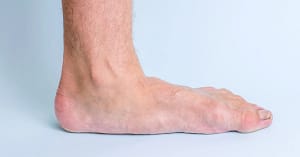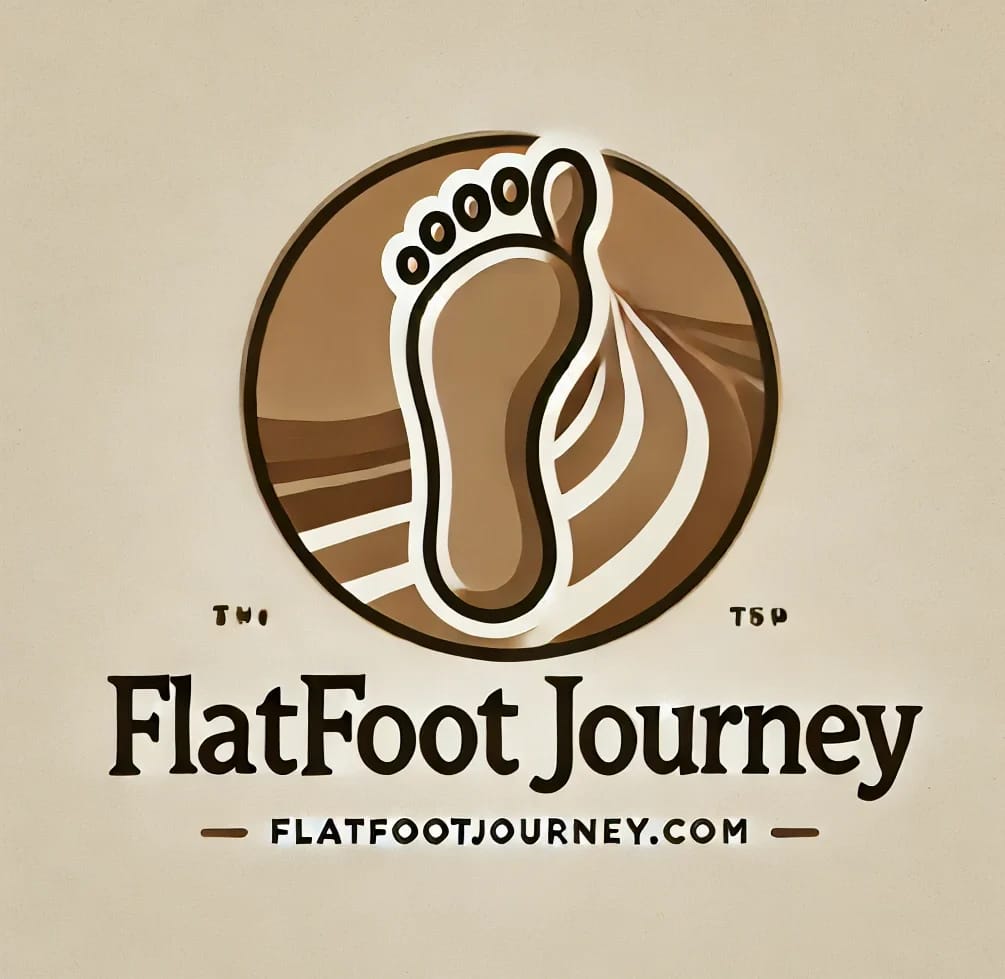Introduction: Living with Flat Feet
I first learned I had flat feet as a child, when a family member noticed my arches were unusually low — something I later discovered runs on my mother’s side. Over the years, I’ve learned that flat feet aren’t just about the shape of your soles. They can affect posture, balance, and even how your knees and back feel after a long day.
If you’ve ever felt your feet ache after walking or standing, or noticed your shoes wearing out unevenly, you might have flat feet too. Studies suggest that flat feet affect 20–30% of adults worldwide (American Podiatric Medical Association, 2025), so it’s more common than most people realize. This guide breaks down everything you need to know — from causes and symptoms to ways you can manage it daily.
What Are Flat Feet?
Flat feet, also known as fallen arches, occur when the arch of the foot collapses and the entire sole touches the ground. The arch normally acts as your body’s built-in shock absorber, helping distribute pressure and maintain balance.

When the arch is weak or missing, each step sends extra stress through your feet, ankles, and legs — often leading to pain or fatigue beyond your feet. According to research published in Foot & Ankle International (2025), this change in alignment can even contribute to knee and lower back discomfort over time.
Related Post: How to Know If You Have Flat Feet — simple at-home ways to test your arches.
Flat Arch vs. Weak Arch: What’s the Difference?
Not all flat feet are the same. Some people have what’s known as a flat arch, which means the arch has structurally collapsed or never developed properly. This usually happens due to bone alignment issues or problems with the tendons that support the arch. A true flat arch tends to stay flat all the time — even when sitting or standing on your toes — and is generally not reversible. People with this type often benefit most from orthotics, supportive footwear, and medical guidance to manage symptoms and alignment.
Others have what’s called a weak arch, sometimes referred to as “flexible flat feet.” In this case, the arch appears normal when sitting or raising the heel but flattens when standing because the muscles or tendons aren’t strong enough to hold the structure. The good news is that this type can often be improved with regular strengthening exercises, stretching (especially of the calves and Achilles tendon), and shoes that properly support and stabilize the arch.
Understanding whether you have a flat or weak arch can make a big difference in choosing the right approach — whether that’s targeted exercises or long-term orthotic support.
Why Do Flat Feet Develop?
Flat feet can appear at birth or develop over time. Common causes include:
- Genetics: Some people naturally inherit lower arches from family (like me).
- Muscle Weakness or Tight Tendons: A weak or tight Achilles tendon can pull the arch down.
- Injury or Overuse: Damage to tendons, ligaments, or joints can flatten the arch.
- Aging & Weight Gain: Over time, the arch may weaken under pressure, especially with extra body weight.
- Medical Conditions: Arthritis, diabetes, or nerve problems can contribute to loss of arch support.
Note: In children, flat feet often resolve naturally as the arches develop. However, if pain or imbalance persists, it’s best to consult a pediatrician or podiatrist for guidance.
How Flat Feet Affect Your Body
Flat feet don’t stop at your feet. Because the arches help align your entire body, their collapse can lead to:
- Foot Pain: Aching in the heels or arch area from strained muscles and ligaments.
- Ankle Swelling: Pressure builds around the ankle joint, especially after long hours of standing.
- Knee, Hip & Back Pain: Misalignment in the feet can travel upward, creating imbalance in posture.
- Fatigue & Stability Issues: Without arch support, each step requires more effort and balance control.
Weak arches may cause more fatigue and instability, while flat arches often lead to persistent knee strain due to deeper structural misalignment.
Explore more: Flat Feet and Foot Pain: Causes, Symptoms, and Relief
Short-Term Relief Options
While flat feet aren’t usually dangerous, managing symptoms early can prevent long-term discomfort.
- Supportive Footwear: Choose shoes with firm arch support, cushioning, and a stable heel cup.
- Orthotic Insoles: These distribute pressure evenly and correct overpronation.
- Avoid Hard Surfaces: Prolonged standing on tiles or concrete can intensify pain.
- Rest and Ice: If your feet swell after activity, cooling them helps reduce inflammation.
Long-Term Strength and Prevention
Over time, strengthening and flexibility training can help support your arches naturally.
- Foot & Toe Exercises: Try arch lifts, towel scrunches, and toe curls to activate small stabilizing muscles.
- Stretch Tight Muscles: Focus on your calves, Achilles tendon, and hamstrings — all of which affect arch movement.
- Maintain a Healthy Weight: Every added kilo increases strain on your feet. My podiatrist once told me, “Your arches feel every step your body takes.” That reminder changed how I approached daily movement.
- Supportive Routines: Incorporate yoga or gentle balance exercises to realign your body and improve posture.
Go slow with exercises, and stop if pain increases — overdoing stretches or strength work can worsen tendon strain. For persistent or severe cases, consult a podiatrist about physical therapy or, in rare cases, surgical options.
Living with Flat Feet: A Personal Note
Millions of people live with flat feet — and many don’t even realize it until pain starts. For me, understanding the condition was a turning point. Once I learned how to support my arches and strengthen the surrounding muscles, everyday walking became less tiring and more natural.
Flat feet don’t have to define what you can or can’t do. With the right care and awareness, they just become another part of knowing your body better.
You’re Not Alone
Have you experienced ankle swelling or arch pain? What has helped you the most — supportive shoes, insoles, or exercises?
Share your experience in the comments below — your story might be exactly what someone else needs to hear.
Key Takeaway
Flat feet are more than a cosmetic concern — they influence posture, balance, and comfort. Understanding your type, causes, and management options is the first step toward pain-free movement.
At FlatFootJourney.com, I share what’s worked (and what hasn’t) through personal experience, research, and honest product reviews — so you don’t have to figure it out alone.
